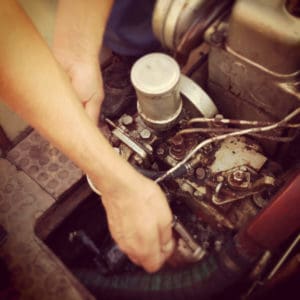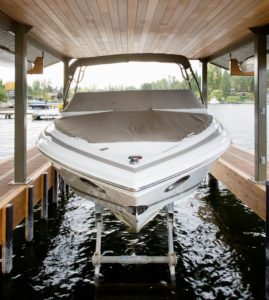Does the hull of your boat have a yellowish or murky-looking appearance? The reason for it looking that way is most likely due to your boat’s gelcoat. The fiberglass hull of your boat most often has an exterior coating called gelcoat, that helps protect it and keep it looking shiny and clean.
Over time, the gelcoat on your hull will start to oxidise, and because of that, will look yellow, dull and dirty. This article will go over how, after rolling up your sleeves, you can clean the gelcoat on your boat’s hull and restore it back to its former glory.
What is gel coat oxidation?
Gel coat oxidation shows up as either fading of colour, or if more advanced, as a chalky, porous substance. Oxidation is caused by UV degradation of the boat’s gel coat or by not being properly protected by a sealant. The sealant can also wear down over time. UV rays can slowly break down the gel coat over time, so don’t kick yourself if it starts to happen — it’s a normal occurrence.
How do I prevent oxidation?
Now that you know exactly what oxidation is, the next best step is to know how to prevent it so you don’t have to remove it and then polish your hull as often. The easiest way to prevent oxidation is with regular cleaning, polishing, and waxing of your boat. Cleaning is not only cost-effective, but it will help you save your gel coat and stave off oxidation for longer.
You’ll want to try to wash and dry your boat each time you pull it out of the water or take it out. Though it may take up extra time upfront, you will save plenty from letting the dirty water from staining your fiberglass colours, contributing to corrosive salt buildup, mold from settling into the surfaces, and oxidation from taking hold sooner.
Can I use automotive products on my boat?
It is highly recommended to not use automotive products on your boat, as they have completely different needs for staying clean and protected. Unlike automotive coating, gel coats are much more porous and dense, so you’ll need different polishers and sealants to make sure the polishing and detailing work on the hull not only protects, but looks great as well.
It is recommended to stay away from using the same polishers and techniques you would use for your automobile, as the hull polishing tools must be specific to boat detailing to avoid damage to your boat’s gel coat. Automotive products tend to not be marine grade because they are formulated for clear coats, not gelcoat. See your local boating supply store for recommendations on what products to use if needed.
How do I get the oxidation off my boat?
Steps to Polishing Your Boat’s Hull
Step 1: Wash your boat with a boat-specific cleaner to remove surface stains and build-up.
Step 2: Remove stains with scrubbers and elbow grease. Most stains should come off this way.
Step 3: (Optional) Wet or Dry Sand your hull if the oxidation is advanced.
Step 4: Apply a high-quality polishing compound to the boat. Use a polish with abrasives to help polish out the oxidation and really get the gel coat shining.
Step 5: Wax and seal with a protectant. Use a buffer and apply wax to the surface then polish to a nice, shiny finish. UV wax is recommended, as it keeps oxidation from taking hold as fast in the sun.
How often should I polish my boat’s hull?
The time between polishing your hull depends on your environment and weather at the location your boat is docked at.
Hotter climates and lots of sunshine will start to wear down the gel coat faster, so make sure to be ready to polish at least every 3 months, or more if you take your boat out often. In cooler weather, as long as it is temperate year-round, your gel coat will remain looking fresh and without oxidation longer. Boats that are stored out of the water require much less maintenance, including longer time between hull polishes.
Let Us Do the Waxing While You Enjoy Our Marinas!
Corleone Marinas at the Balmain Marina has one of the last remaining slipways in Sydney Harbour. Our marina services include the best antifouling and hull and boat maintenance and repairs. We also offer Do-It-Yourself slip
way usage on the weekends. We know you can’t wait to get out on the water and enjoy your boat, so let us help with those routine sailing maintenance issues so you can focus on enjoying your vessel.
Contact us today to find out more about our excellent marina services located at four stunning Sydney locations. We’ll take good care of you and your boat so you can relax and enjoy sailing worry-free.









